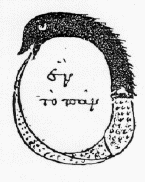Dobbs 1975 Cambridge Univ Press
From Bioblast
| Dobbs BJT (1975) The foundations of Newton's alchemy or "The hunting of the Greene Lyon". Reissued as a paperback 1983. Cambridge Univ Press Cambridge:300 pp. |
Dobbs BJT (1975) Cambridge Univ Press
Abstract:
• Bioblast editor: Gnaiger E
Some citations
Attraction, affinity, force
* Affinity * Force
- But in fact his effort to integrate alchemy and mechanism seem to have produced one of his best virtuoso performances: the creation of a new concept of force. - (p xii)
- Newton looked for no less than the structure of the world in alchemy - a system of the small world to match with his system of the greater. Having found out the force which held the planets in their orbits, he remained unsatisfied. "I wish," he said in the preface to the first edition of the Principia, "that we could derive the rest of the phenomena of Nature by the same kind of reasoning from mechanical principles...." - (p 88)
- .. the new concept of force, as it grew and developed in Newton's mind, undoubtedly had some roots in his alchemical studies, .. Although Newton never published a work fully devoted to alchemy, after 1692 he did make available to the world his mature thoughts on the sub-sructure of matter and on the force acting there. - (p 199)
- .. Newton wrote: Furthermore through the slow and continued motion of heat the particles of bodies can gradually change their arrangement and coalesce in new ways and by the attractive forces of contiguous particles (which are stronger than expulsive ones) come together more densely.
- Isaak Newton, draft "Conclusio," in Newton, Unpublished papers, pp. 332-33 and 346 (3, n. 157). The same idea was expressed in similar language by Newton in a partial draft of the "Praefatio" to the first edition of the Principia: Newton, Unpublished papers, pp. 303-04 and 306-07.
- He was forced to the conclusion then that the aether he had postulated actually did not exist. .. With the disappearance of his invisible mechanism, if one may so speak, Newton was thrown back upon the concepts of attraction and repulsion, actions which take place at a distance rather than by impact. From that time on Newton spoke of forces of attraction and rpulsion, of active principles, of "Powers," and of "Virtues" by which particles of matter act on each other at a distance. - (p 211)
- Richard S. Westfall, Force in Newton's Physics. The Science of Dynamics in the Seventeenth Century (London: Macdonald; New York: American Elsevier, 1971) pp. 377-78.
- Newton's forces were very much like the hidden sympathies and antipathies found in much of the occult literaure of the Renaissance period. - (p 211)
- Not only was there the attractive force of gravity binding the plantes and the stars into a vibrant whole, there was also activity in the substrucgtore of matter. Gone, to Newton's mind, were the inert particles of Cartesian matter resting quiescently together between impacts. In their place were structured corpuscle of increaseing complexity, held together upona occasion by attractive forces of their own, but also capable upon other occasions of repelling each other. .. If the concept of alchemical attraction had allowed him to accept the ontological reality of celestial forces through analogy with the alchemical "magnets" he had studied, why should he not then expect that the concept of attractive force would apply to earhly chemical phenomena as well? - (p 212-213)
- And as in Algebra, where affirmative Quantities vanish and cease, there negative ones begin; so in Mechanicks, where Attraction ceases, there a repulsive Virtue ought to succeed. - (p 215)
- Isaak Newton, draft "Praefatio," in Newton, Unpublished papers, pp. 302-04 and 305-07 (3, n. 157).
Pressure
* Pressure
- In both the "Hypothesis" of 1675 and the student notebook of 1661-65, Newton tended to attribute gravity to the pressure of a descending aetherial shower. - (p 210)
Oroboros
* Oroboros symbol
- Here Jung has done some of his most important work: in identifying the great mysterious symbols of alchemy as psychic images. These all-pervasive symbols occur throughoutthe literature of alchemy: Flamel's dragons - one winged and one wingless. - (p 32)
- Tractatus brevis, sive sumarivm philosophicum, Nocolai Flamelli in MHRA (Musaeum hermeticum reformatum et amplificatum, indrod. by Karl R.H. Frick, introduction translated by C.A. Burland, Graz: Akademische Druck-u. Verlagsanstalt, 1970), pp. 172-73 (2, n. 13): "Dicta ista duo spermata veteres sapientes duos Dracones vel serpentes praefigurarunt, quorum unus alas, alter autem nullas habuit. Draco sine alis suphur est, numquam ab igne avolans. Alatus serpens argentum vivum est, quod à vento transportatur...."
- If and when the psyche found itself able to fuse these archetypal opposites into its new "self," symbols of wholeness and unity appeared, such as the ourobouros, .. - (p 33-34)
- Lambsprinck's Sixth Figure, MHRA p. 353 (2, n. 13), shows the dragon biting its own tail with the accompanying text: "Hoc verè est magnum miraculum & cita fraus / In venenoso Dracone summem medicinam inesse." The ourobouros is one of the oldest of alchemical symbols. One from ancient Greece, bearing the text, "One is all, and by it all, and to it all, and if one does not contain all, all is nought," has been reproduced in John Read, Through Alchemy to Chemistry. A procession of Ideas & Personalities (Harper Torchbooks; New Aork and Evanston: Harper & Row, 1963, p. 25.
Cited by
- Gnaiger E (2020) Mitochondrial pathways and respiratory control. An introduction to OXPHOS analysis. 5th ed. Bioenerg Commun 2020.2. https://doi.org/10.26124/bec:2020-0002
Labels:
MitoFit_2020.4, Force, Oroboros, Pressure, BEC 2020.2




